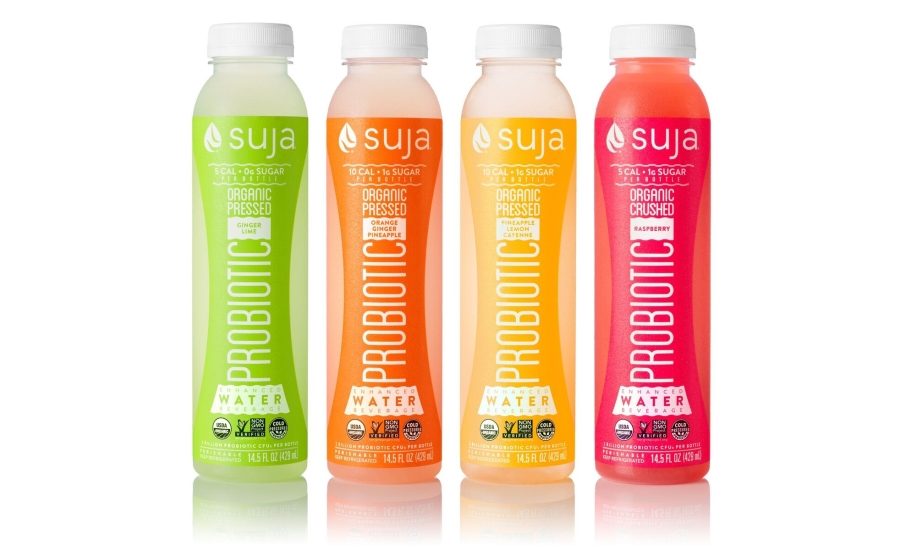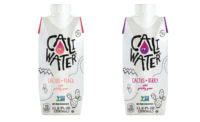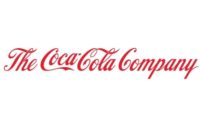Suja Juice innovates to bring organic, HPP juices to the masses
Company releases new functional water, building new manufacturing facility




Produce for Suja’s juices is washed in a custom-built machine that accommodates the various weights of produce that the company uses, according to Chief Operating Officer Kurt Cahill. (Photo by Wade Hammond)






Health and wellness remains an overarching driving factor in the consumer packaged goods (CPG) market today. As such, consumers have increasingly grown cautious of the products that they put in their bodies, with a growing number avoiding sugar-sweetened beverages. But one brand is tackling this issue by trying to reinvent the juice category.
With this goal in mind, San Diego-based Suja Life LLC is thriving in a crowded beverage market by providing its organic, high-pressure-processed (HPP) juices at affordable prices.
Pressed to grow
The three-year-old company started small and has kept its roots close-to-heart.
“It really started as a bunch of surfer dudes producing juice with a lot of non-commercial equipment,” explains Kurt Cahill, chief operating officer of Suja. “The first facility was actually in Eric Ethans’ kitchen. From there, they graduated to the back of a nightclub that they make-shifted into a little processing facility; it was only a couple-thousand square feet. At that time, Jeff Church came on board, and he kind of figured out that this [was] definitely a viable option for a business.”
Chief Executive Officer and Co-Founder Jeff Church explains that the original business model was not viable, but soon evolved into a promising beverage business. “I met with the juice tech, Eric Ethans, maker of the original batch of juices. [He was a] young guy, super talented, not really a business guy, but a super talented chef. He and Annie Lawless, who’s also a co-founder, were delivering home-delivery products in San Diego to homes that were interested in super-healthy organic juices,” he says. “But they were in glass bottles, there were no labels on them, the names of the juices were written on the tops. He was actually delivering a bunch of them on a skateboard dragging a cooler behind him.”
Church was introduced to Ethans and Lawless by James Brennan, who worked in the restaurant industry. Together, the four co-founders evaluated whether this could be become a scalable model.
According to Cahill, production was another hurdle in the beginning. “Jeff got in contact with some people in the industry and they found high-pressure pasteurization [(HPP)], and this is when the company was born at this point, …[N]ow you have the commercial transit to get the product from a fresh, three-day shelf life to a product that has 35 to 45 days [of shelf life], which is exactly what you need to sell a product.”
From that point on, Suja has experienced rapid growth. To accommodate its growth, in August 2013, Suja moved into its current San Diego facility, a semi-automated 60,000-square-foot facility that has the capacity to produce more than $100 million in sales, Cahill says. “We went from 2,000 square feet to 60,000 square feet in about six months,” he adds. “It was a big step. We were young, our biggest customer at that point, in 2013, was Whole Foods, but we were very quickly expanding into conventional retail grocery, so we needed to increase the capacity and pretty quickly.”
According to Cahill, 2013 was the company’s first full year in business, and it amassed sales of $18 million. In 2014, the company generated sales of $42 million, and in 2015, reached $65 million. In 2016, Church expects Suja to surpass more than $100 million in sales.
Suja’s growth recently was validated when The Coca-Cola Co., Atlanta, made a minority investment in the company in 2015. Among other things, the investment contributed to the construction of a new manufacturing facility and headquarters in Oceanside, Calif., which Cahill expects to move into by April 2016. The total size of the facilities will be approximately 175,000 square feet. This is three-times the size of its current San Diego facility, he adds.
Although the company was excited about the partnership, there were some initial hesitations, Church notes. “Before we went anywhere with [The Coca-Cola Co.] though, we wanted to make sure that we were aligned in terms of our missions. …One of our guardrails is organic, non-GMO, and they use GMO products in some of their products, and we wanted to make sure they didn’t have any issue with us continuing to be organic, non-GMO,” Church explains. “And they didn’t. We met at a very high level with them and flushed that out, and they were completely supportive of what we were doing, which was great because we needed to hear that before we were able to contemplate going forward.”
In addition to the monetary support, the investment has benefited Suja through reduced bottle costs as well as increased distribution outlets, Church says.
“[Previous to the deal, Suja’s distribution base] was pretty broad,” he says. “There are certain accounts that they got us in to that we didn’t have access to. Foodservice is an area that we will get a lot more support from them in the future that will help us. We got into colleges and universities, and what we’ve done is partner with Odwalla, and Odwalla has [its] own DSD network. …We’ve just tagged on to what they’re doing, and they’ve been great about it.”
According to Church, in the first 90 days of the partnership with The Coca-Cola Co., Suja added more than 2,000 accounts to its distribution network, a 20 percent increase in its consumer base.
Cahill echoes similar sentiments in regards to the investment. “Democratization of juice is getting a bottle of affordable, high-quality ‘organic’ juice in everybody’s hands, and Coca-Cola has embraced that with us. They’ve opened up a lot of channels for us to actually get that done in a time line that normally would have taken us a lot longer.”
Through this partnership, Suja aims to maintain the best of being a small company while gaining the benefits of a big company, Church adds.
A dedication to innovation
The company attributes much of its success to its dedication to innovation. “We’re a very innovative company. We’ve launched more than 80 products in the three years, and we’ve called back 30 of those that didn’t meet market expectations” Church says. “I think one of the things we’ve done well is not letting the concept of making something great get in the way of making something good.”
In 2012, Suja launched its first retail product line: the Classic line. Initially an exclusive at Whole Foods Market, Classic juices are the company’s premium products that are available in 16-ounce, single-serve PET bottles and retail for $7.99. “That’s the product that is really what we built the brand on,” Church explains. “… Again we knew at the $7.99 price point we weren’t going to democratize organic juice and make it available to the masses, …which is why we came up with Elements and Essentials.”
The Essentials, which now is referred to as “Suja,” and the Elements lines are available in 12-ounce, single-serve PET bottles that retail for $3.99 and $4.99 respectively; however, the Elements line is an exclusive product line at Whole Foods Market.
“When we launched, we launched in the 16-ounce and it was exotic ingredients like Camu Camu, just functional things, but there were still some with pretty simple formulas. And that’s when the decision was made to launch a lower-priced line, [and] a lot of the flavors that we were already creating were used as the cornerstone of how to create the next flavors,” explains Nicole Vidaurreta, vice president of sales for club, mass and specialty. “But from here on out, anything that we innovate in the 16-ounce line with the premium price is going to have premium ingredients in it. So it’s going to have something that’s truly different than any of the stuff we have in the $3.99 line.”
Juice isn’t the only category that company is looking to shake up. In January, Suja released its newest line — Suja Pressed Probiotic Waters — exclusively available at Target. The functional, flavored waters contain 10 calories or less and 1 gram of sugar or less, the company says. Additionally, each bottle contains 2 billion colony-forming units (CFUs) of vegan probiotics. The functional waters are available in four flavors: Raspberry, Orange Ginger Pineapple, Pineapple Lemon Cayenne and Ginger Lime, and retail for $2.99 for a 14.5-ounce bottle.
“When you look at Suja and all the lines, we’ve spanned the breadth of juices, so there’s a few other beverage segments we don’t really touch into yet,” explains Suja’s Vice President of Commercialization Bryan Riblett. “[The probiotic water line] was more an extension of bringing the Suja experience to flavored water.”
He explains that adding the “Suja experience” to flavored water meant using fresh ingredients and providing functionality, another core focus of the brand. “Fortunately, with the popularity and exposure that probiotics have been getting lately, there [are] a lot of people that are developing very functional strands of probiotics [and] that allows us to easily assimilate probiotics into a multitude of our juices and waters.”
According to Vidaurreta, Suja’s 2015 partnership with Target’s Made to Matter program will give the company a chance to learn before expanding distribution of the Probiotic Waters. “Because it’s an exclusive program with Target, we have a period of time where we can tweak the product and figure out how we can make it better or what we need to change,” she explains. “…It’s an incredible learning opportunity for us because it’s launched nationally, across all 50 states.”
Riblett, who formulates all of Suja’s products, focuses on flavors by looking for new, exotic flavors and experimenting with new pairings. “No matter what direction you’re going or trying to bring forward…there’s four or five different taste profiles that people can consider, and you want to make sure that if you really want someone to have a positive reaction that they’re experiencing all of those taste profiles,” he says. “When you drink a bottle of Suja, you can really taste all the ingredients that are in the bottle, …so each one of them plays a role in trying to create this balanced flavor.”
Church adds that price point is an essential consideration for the company. “Our mission is to democratize organic juice and make it available to the masses at an accessible price point,” he says. “So we felt like $3.99 [for the former Essentials line, now just known as Suja] was the right price to be able to hit. …We tested that and saw that elasticity wasn’t there above $4, so that’s where we focused on our price point.
“It’s a fairly low price point, so our profitability on the Essentials line is pretty low, but over the long run, as we build scale, and we enjoy overhead because we make our own products,” Church continues. “[Then] we absorb that overhead [and] we are able to get a lower-cost product. And as we keep the lower-cost product, we keep the price point at $3.99, we’ll be able to make a nice profit margin at that point in time. So it’s a long-term strategy, but it’s very difficult for others to compete at the price level in terms of what we’re doing.”
A similar strategy is planned for Suja’s multi-serve offerings, Church notes. Currently, Suja juices in multi-serve sizes are packaged in 49-ounce bottles that retail for $12.99. However, Church hopes to drop the price to less than $10. “We’re in the process of redesigning that product so we can lower that price to $9.99 and that’s going to entail revising the packaging size from 49 ounces to 46 ounces,” he explains. “We’re still giving up a lot of margin to make that happen, but we think we’ll have some good velocity at $9.99.”
With innovation at its core, Suja has no plans to stop. In fact, Church says the company currently is working on a line of quickly consumable shots that provide a boost of nutrition and function. “These are 3- to 4-ounce shots that are more aggressive; it’s a little more on the health with punishment side,” he says.
Riblett adds that the company always is looking to create more functional beverages. “Something that’s not only refreshing and tastes good, but also something that is serving a purpose for you,” he says.
Additionally, Riblett says he would like to showcase less mainstream ingredients that have high nutritional values, and also use more recognized ingredients in a way that is going to offer boosted health benefits. “Hopefully we’ll be able to cross the two together and add a little bit of Suja-ness in there,” he says.
As innovation abounds in Suja’s profile, the company says that its top-turning products remain as such. According to Church, Suja Mighty Greens (from the line previously known as Essentials), consistently is it’s top-selling product.
Operations’ innovations
Innovation extends beyond Suja’s products and into its operations as well. Suja operates a made-to-order facility in which orders are received on Tuesdays and Wednesdays, according to Cahill. On Thursdays and Fridays the produce is harvested, and then on Sundays, the juicing process begins. However, being an organic, non-GMO company, sourcing of the produce is essential.
“Quality control is a huge part of what we do here. Quality [and] food safety [are] our No. 1 concern,” Cahill explains. “So how we make sure we have a good sense of supply chain is always looking forward into weather patterns, growing conditions [and] growing seasons.”
However, forecasting can’t always accommodate all the sourcing obstacles. Cahill notes that organic apples pose one of the largest challenges when it comes to organic fruits. “We have to forward-buy all of our apples in October/November for the entire year. We’re talking 12 million pounds of fresh apples this year, [and] probably closer to 20 million pounds of fresh apples next [season] in 2016.”
Riblett adds that as he researches new, innovative ingredients, he often finds ingredients that suppliers haven’t heard of. “We work together to find out if [the ingredients are] commercially viable,” he says. “That’s the push-and-pull of wanting to source really cool ingredients and actually being able to bring them into the market.”
He says that often there isn’t enough organic produce or other ingredients available. “We only use organic, and there’s times where [an ingredient] may only be available in conventional, or not enough where you can get enough,” Riblett says.
However, Cahill points out that innovation also is present in the plant itself. Starting from the beginning of the juicing process, the company’s produce-washing machine is custom-built to accommodate the various weights of the produce used in its juices.
However, he also notes that several changes will be made to the process once the company moves to the new Oceanside facility, including more automation. For example, the San Diego facility currently utilizes a bag-press for its HPP process, but an automated belt-press will be used in the new facility, according to Cahill.
In addition, the new facility will feature eight blending tanks, two more than the current San Diego facility, and an additional bottling line is planned as well. With these new additions, the company plans thrive as it accommodates its continuing growth.
Related: Suja Life LLC drives brand through culture, social media marketing
Looking for a reprint of this article?
From high-res PDFs to custom plaques, order your copy today!











